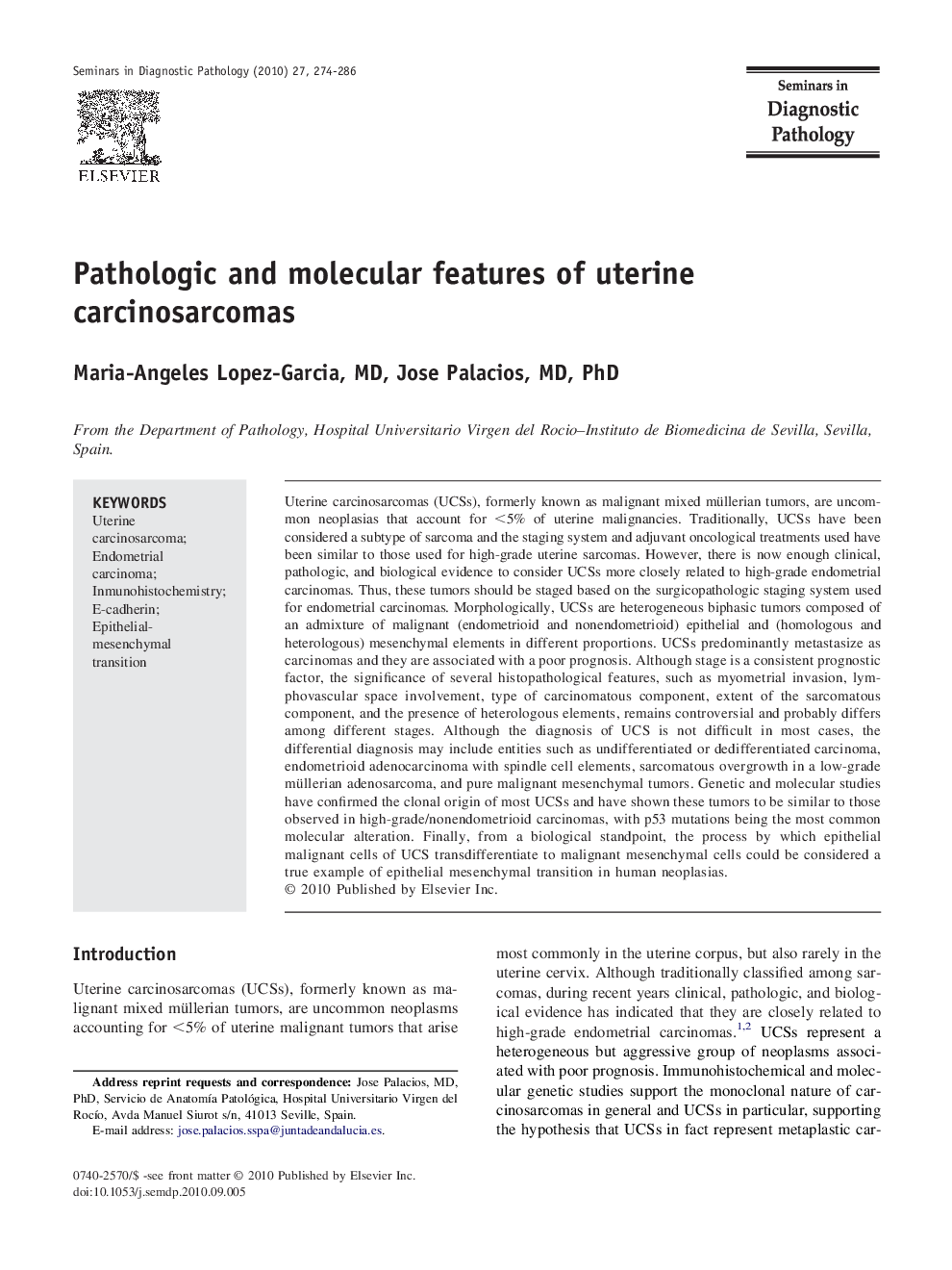| کد مقاله | کد نشریه | سال انتشار | مقاله انگلیسی | نسخه تمام متن |
|---|---|---|---|---|
| 4138496 | 1272151 | 2010 | 13 صفحه PDF | دانلود رایگان |

Uterine carcinosarcomas (UCSs), formerly known as malignant mixed müllerian tumors, are uncommon neoplasias that account for <5% of uterine malignancies. Traditionally, UCSs have been considered a subtype of sarcoma and the staging system and adjuvant oncological treatments used have been similar to those used for high-grade uterine sarcomas. However, there is now enough clinical, pathologic, and biological evidence to consider UCSs more closely related to high-grade endometrial carcinomas. Thus, these tumors should be staged based on the surgicopathologic staging system used for endometrial carcinomas. Morphologically, UCSs are heterogeneous biphasic tumors composed of an admixture of malignant (endometrioid and nonendometrioid) epithelial and (homologous and heterologous) mesenchymal elements in different proportions. UCSs predominantly metastasize as carcinomas and they are associated with a poor prognosis. Although stage is a consistent prognostic factor, the significance of several histopathological features, such as myometrial invasion, lymphovascular space involvement, type of carcinomatous component, extent of the sarcomatous component, and the presence of heterologous elements, remains controversial and probably differs among different stages. Although the diagnosis of UCS is not difficult in most cases, the differential diagnosis may include entities such as undifferentiated or dedifferentiated carcinoma, endometrioid adenocarcinoma with spindle cell elements, sarcomatous overgrowth in a low-grade müllerian adenosarcoma, and pure malignant mesenchymal tumors. Genetic and molecular studies have confirmed the clonal origin of most UCSs and have shown these tumors to be similar to those observed in high-grade/nonendometrioid carcinomas, with p53 mutations being the most common molecular alteration. Finally, from a biological standpoint, the process by which epithelial malignant cells of UCS transdifferentiate to malignant mesenchymal cells could be considered a true example of epithelial mesenchymal transition in human neoplasias.
Journal: Seminars in Diagnostic Pathology - Volume 27, Issue 4, November 2010, Pages 274–286